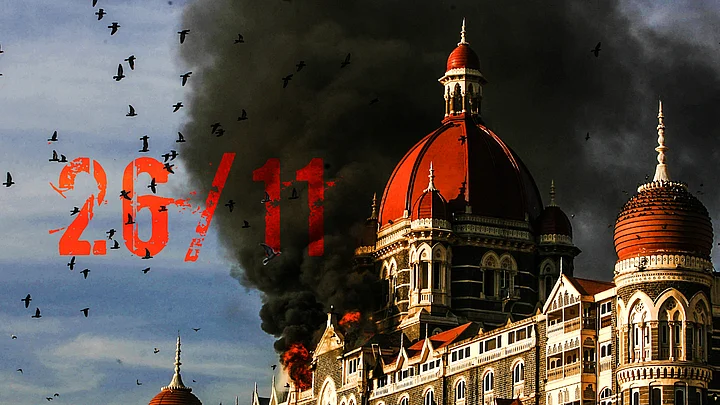Its nine long years since that fateful evening in Mumbai, when the 10-man Pakistani Lashkar-e-Taiba (LeT) terror squad landed in south Mumbai and turned a peaceful metro city into living hell for three days, from 26 to 28 November 2008.
Much has happened in these nine years, not the least being the fact that India has remained relatively safe from a major terror strike in comparison to many other parts of the world. One could safely state that Pakistan-sponsored terrorists have succeeded in targeting military targets in India in the Jammu and Kashmir combat zone but not outside that. Pathankot, Uri or Nagrota – the terrorist targets in 2016 were all military bases with no civilian casualties.
The effect of a big terror strike with civilian casualties is remarkably greater on the psyche of a nation.
Is India Safe From Another 26/11?
In the last nine years global terrorism has undergone wide changes. Improvement in communication networks, the increasing diversity of the Internet, exploitation of social media for recruitment, influencing, inciting, training and directing, plus the ease of transnational finance, have all brought revolutionary change in terrorist strategy. The high end of violent and depraved cruelty displayed by ISIS has been matched by the ingenuity of its sponsored lone wolf attacks using just vehicles as kinetic weapons to cause mass casualties; witness New York, London and repeatedly Paris besides many others.
A visit to the charming city of Singapore reveals the inner fears of the authorities there.
A terrorist attack to demonstrate the arrival of ISIS is anticipated with numerous consultations and proactive measures to offset it.
Is India safe from the possibility of a major terror related event nine years after 26/11?
Pakistan's Army Dictates the Country's Destiny
The longer a nation has been safe from high-profile terror acts, greater are the chances that it is nearing the possibility of such an event. This is so, especially if ingredients of radical ideology, sponsored proxy war and attempt to create larger turbulence in society through dissensions between communities, all continue to exist.
A simple examination of what has changed since 2008 and what has not, may give some pointers towards what we are seeking. The Pakistan Army is strongly embedded in its national strategic leadership role in Pakistan, dictating the course of the country’s destiny. Its strategy and subsequent plan to be in a state of perpetual war with India through asymmetric means remain intact.
The LeT has undergone a process of international vilification and actually recovered from it. India’s efforts towards prosecution of the LeT Chief, Hafiz Sayeed have not succeeded; In fact, he has just been released from house detention.
The desire of the LeT to instigate India's majority community to respond with violence against the minority and thus increase internal dissension in India is as strong as ever, as much as LeT’s ambition of being viewed as a flagship organisation especially with its recent political ambitions. Currently its capability to calibrate violence of different types in Kashmir is questionable and dwindling especially after a run of success by the Indian security forces (SF) that have restored military domination. It could therefore focus elsewhere in India.
A Unique Terror Strike
Jaish e Mohammad (JeM), the terror group headed by Maulana Masood Azhar, is in resurgence. Azhar founded it in 2000 after the Kandahar hijack.
Once in the dog house for conspiring to target none other than Parvez Musharraf, it somehow managed to atone for that and has of late been proving itself quite indispensable to the ISI. It recently successfully undertook some sneak actions against SF camps in the Valley with a degree of impunity. In the world of transnational terrorism, inter-group competition and even cooperation are not factors which can be discounted.
A terrorist strike with a unique stamp of methodology untried in India would be a signature achievement for any of the groups.
Lone wolf and vehicle-borne attacks immediately come to mind. The feasibility of suicide bombing cannot be discounted either, although this is a phenomenon which has escaped India’s terror scene all these years.
Intelligence and Security Has Kept India Relatively Safe
We generally accept that threats from IS and al-Qaeda to India are remote as of now but the demonstration of capability or setting the stage for subsequent surge of activity cannot be denied. None can also deny the existence of isolated radical Islamist presence in pockets of India. The potential returnees among the very few who went seeking the IS adventure may not possess necessary terrorist skills but that remains at best an assumption.
In intelligence assessments we need to take the worst case and lone wolf attacks involve just a below-the-radar individual about whom little can be known.
India has been kept relatively safe by its intelligence and security communities for the last nine years. Yet, being aware and being careful is half the answer to prevent a major terror strike in India. This is the time for more public sensitization and awareness drives.
(Lt Gen (Retd) Syed Ata Hasnain is a former GOC of the army’s 15 Corps and now associated with Vivekanand International Foundation and Institute of Peace & Conflict Studies. He can be reached at @atahasnain53. This is an opinion piece and the views expressed above are the author’s own. The Quint neither endorses nor is responsible for the same.)
(At The Quint, we question everything. Play an active role in shaping our journalism by becoming a member today.)
